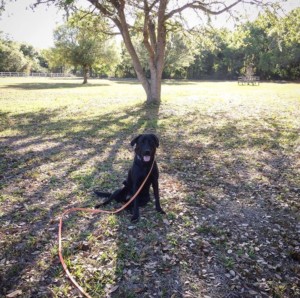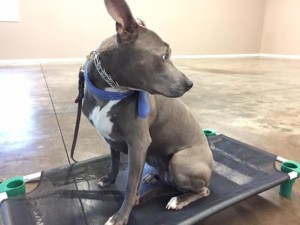Updated December 30th, 2017
Whether you’re just adopting your first dog or you have been around dogs your entire life, you might believe things about man’s best friend that aren’t actually true. Here are some of the most common misconceptions about dogs and the truth:
You can’t train an adult dog.
If you’ve adopted an adult dog that has bad habits or have started to notice bad habits in a dog you’ve raised from puppyhood, you might think it is simply too late to train your dog out of those habits. Nothing could be further from the truth. With patience and the right training regimen, you can teach a dog of any age new tricks.
If your dog looks like an adult, he is an adult.
I remember looking at my second dog when she was a year old and thinking she was an adult dog. Looking back at pictures of her during that time, compared to how she looks now, at five years old, it is clear that she was still a puppy and would be for at least another year.
Most dogs, especially larger breeds, will not be adults until they are two years old.

Only dogs that have obedience problems need obedience training.
The truth is that every dog can and will benefit from obedience training. These classes are not just for dogs that need to be socialized or have a hard time listening to commands from their owner. They are, actually, for any dog.
They’ll help teach your dog manners and make him more teachable in general, if you should want to teach him other commands or tricks in the future. This is also a great opportunity to build the relationship between you and your dog!
Dogs need a lot of different foods to eat.
While we humans get bored if we have to eat the same food over and over, dogs are not the same way. In fact, your dog loves his routine.
If you change the food that you give him frequently, he is more likely to become picky and will demand food changes more often. It could also cause gastrointestinal distress, which is never fun for a dog.
It’s also not true that you need to add supplements to their food. While something like a glucosamine supplement would be good for an older dog who is developing joint issues, a dog who is eating high quality food should not need any supplements.
 Dogs only need yards to be happy.
Dogs only need yards to be happy.
Dogs do not want to play by themselves. Like their genetic relatives, wolves, they want to be with their pack. While they might run around the yard, burning off their energy, they would be much happier if you were out there to play with them. Exercise is great for a dog, but it is even better if you are out there exercising with them. As the owner, it is your job to make sure that he gets all of the exercise that he needs.
Dogs destroy things to get back at you.
Nothing could be further from the truth. Dogs aren’t conniving animals—they don’t plan to destroy your things because they want to make you angry.
Usually, when a dog is destroying things, it is because they are bored or lonely. Many owners get upset with their dog when they’ve been gone all day and come how to discover that their dog has chewed up all the shoes in the house.
This is a good indication that your dog has separation anxiety, not that your dog is vengeful and is trying to punish you for being gone all day.
Some dog breeds are naturally more aggressive.
This is a myth that is perpetuated by the fact that many owners expect their breed to more aggressive or actually train them to be aggressive. The truth is that any breed can be aggressive and that breeds that are often tagged as being more aggressive can be the biggest goofballs.
What determines if a dog is aggressive? How he was raised. If the owner trains him to be aggressive or abuses his dog, the dog will be aggressive.
If he is raised by loving owners who socialize him properly, he’ll be just as sweet as any other well-adjusted dog, regardless of breed.
A wagging tail always means my dog is happy.
 Your dog uses body language to communicate with you, so it is important to understand what that body language means. Most of the time, when your dog wags his tail, it is because he is happy.
Your dog uses body language to communicate with you, so it is important to understand what that body language means. Most of the time, when your dog wags his tail, it is because he is happy.
However, there are instances in which wagging could be a warning, specifically when it is paired with raised hackles and pinned back ears.
If the tail is down or just vertical (and not up and wagging like crazy), this usually means he is telling you to back off.
All barking is aggressive.
This is another dangerous misconception. Dogs don’t only bark when they sense danger. They also bark when they are excited or even just to get your attention.
They also bark to let other dogs know that this is their territory and other dogs should back off. They might even just bark at each other as a greeting. Again, it’s important to look at the body language of your dog before assuming he’s being aggressive (or happy or excited).




